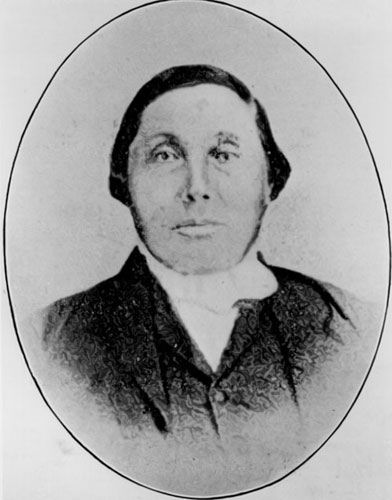Whenever I grumble that my own process to ordination seemed to take a longer-than-usual time, I always think of Henry Budd, the first Anglican priest ordained who was of Canada’s First Nations people. Henry began studies towards ordination in 1830, but it would be another two decades before he was ordained deacon. He was finally ordained priest in 1853.
Henry endured a number of slights in his life. For starters, his birth name was Sa-ka-chu-wes’cum (which means, aptly, “Going up the hill”) but as was the custom of the times, he was named Henry Budd by George West, the Anglican missionary who cared for him after his father died. Additionally, because he was Cree, throughout his missionary career he earned half the stipend a white missionary received–despite the fact he supported his wife, children, mother, and his brother’s family.
Additionally, he suffered tragedies that were typical for anyone living in those days. He lost his wife, oldest son and a daughter to scarlet fever. Following this tragedy, he sent his three remaining children to live near the Red River, (now in Saskatchewan), while he continued his missionary work in what was then known as Rupert’s Land. He was also recovering from injuries sustained while falling off a horse at the time.
Yet none of this stopped his missionary zeal. In addition to his ministry to the Cree people of what is now northern Manitoba and Saskatchewan, he also translated the Bible and the Book of Common Prayer into Cree…and as a personal aside, I suspect in a way, I have Henry Budd to thank for something that shaped my life long before I became an Episcopalian.
Almost 30 years ago, I spent some time on a family medicine rotation in another part of Rupert’s Land, in the James Bay of Ontario, in the town of Moose Factory (I know, “factory” is a strange word to put with “moose”, but it’s like this…the head honcho in a Hudson’s Bay Company post was the factor…and factors live in factories like rectors live in rectories.) Although this was in a period of my life that I had turned my back on organized religion, there were basically two things to do in Moose Factory…one could either watch guys from age 5 to 75 play hockey at the local arena, or see what was going on over at the Anglican church and its parish hall. I wandered in to St. Thomas’, the local parish…and what I saw, although I didn’t know it at the time, would be a tidbit that formed and shaped my priesthood.
The first thing I noticed was the altar frontal was made of beaded moosehide. The very next thing I noticed is the prayer books and hymnals were in both English and Cree. What I remember is the entire service was a mashup of English and Cree–songs, readings, Eucharist–and that it didn’t detract from my understanding of the liturgy one little bit. I had no idea at the time, of course, that this wonderful amalgamation of local culture into liturgy was very typical and in keeping with our theology that we make God accessible to the people by making the liturgy accessible to the people, and with its own local flavor, even in the middle of a very set liturgy. In looking back, it clearly shaped and drew me a little closer to the day I’d return to the world of the brick-and-mortar church. A church who had room for the Cree syllabic written language had room for me. I’m also certain it influenced my later love of our own mission stations in the U.S. church, particularly the Cheyenne River and Rosebud reservations in South Dakota.
I also fondly remember another local custom, necessitated by the snow and mud that seemed to permeate Moose Factory–leaving your shoes at the door of most public buildings. It was also the first time I ever attended church in my stocking feet! I was really taking off my shoes and standing on hallowed ground.
So thank you, Henry Budd–thank you for what you accomplished in the name of the church and the lives of First Nation Canadians, and for how over a century later, it would intersect in the life of someone from northeast Missouri.
When is a time you suddenly found yourself being influenced by an unfamiliar culture in the context of your relationship with God and/or the church?
Image: By Unknown – http://esask.uregina.ca/entry/budd_henry_1812-75.html, Public Domain, Link
Maria Evans splits her week between being a pathologist and laboratory director in Kirksville, MO, and gratefully serving in the Episcopal Diocese of Missouri as Interim Pastor at Church of the Good Shepherd and Chaplain of the Community of St. Brigid, both in Town and Country, MO.

